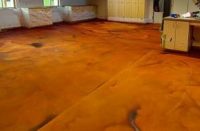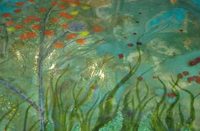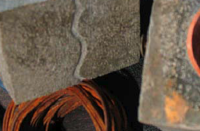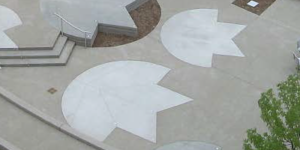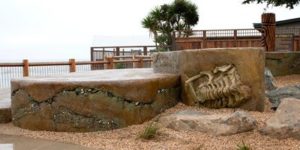The language barrier was the least of the obstacles a team of two professors and a student from Southern Arkansas University had to overcome during a weeklong trip to Cuba last November for an art project with the University of Artemisa. The saga began with a lack of supplies and ended with the death of Fidel Castro the night before the Americans left.
Even though materials from the U.S. were properly shipped and delivered early, the supplies never left the customs house in Havana, says Steven Ochs, a concrete artisan and a professor of art at SAU. Try as they might — they even contacted the country’s Ministry of Higher Education to plead their case — they couldn’t get the Smith Paints stains, sealers and polymer overlays and eight bags of cement released because the professors hadn’t obtained the needed signatures.
“Plans A through D were out the window,” Ochs says, “so we moved on to Plan E, which is an everyday occurrence in Cuba.” That is, to make do with what you can get.
Ed Kardas, the team’s distinguished professor of psychology, ended up driving an hour north to score enough black market acrylic paint to bring the project between the two schools to fruition. Luckily, he and Ochs had stuffed brushes and die grinders and angle grinders, as well as turbo diamond and crack chaser blades, donated by Bosch, in their suitcases. Even though they couldn’t build up areas in relief without the cement, they could “seriously score some concrete” and paint the mural they had planned.
The SAU trio and Cuban students prepared the mural wall by washing it with laundry soap and buckets of water — specialized cleaners and garden hoses are luxuries the Cuban people live without — and preparing the concrete canvas with some ordinary white latex paint.
Artemisa students and faculty drew several thumbnail sketches but the design wasn’t finalized until the U.S. team got to Cuba. The resulting mural is a free-flowing, motion-packed abstract full of images representing the emerging relationship between the two schools. Prominent features include the red, white and blue colors of both countries’ flags, a dove symbolizing peace and the obvious books and pencil. More sublime elements include pixilation squares so familiar to modern-day artists.
“The most interesting thing was that we didn’t need interpreters while we were designing side by side. The art design was a language we all shared and understood on so many levels,” Ochs says. Body gestures, hand gestures, eye contact and spoken words, whether fully understood or not, bridged the communication gap.
A reciprocal trip, where a Cuban team will collaborate on a project with SAU, is planned for late summer.
Oh, in case you’re wondering, the trip to the airport after Castro’s passing was rather uneventful (Ochs credits this to timing) and the team made it out of Cuba without any major altercations. The supplies, however, are still being held hostage.
